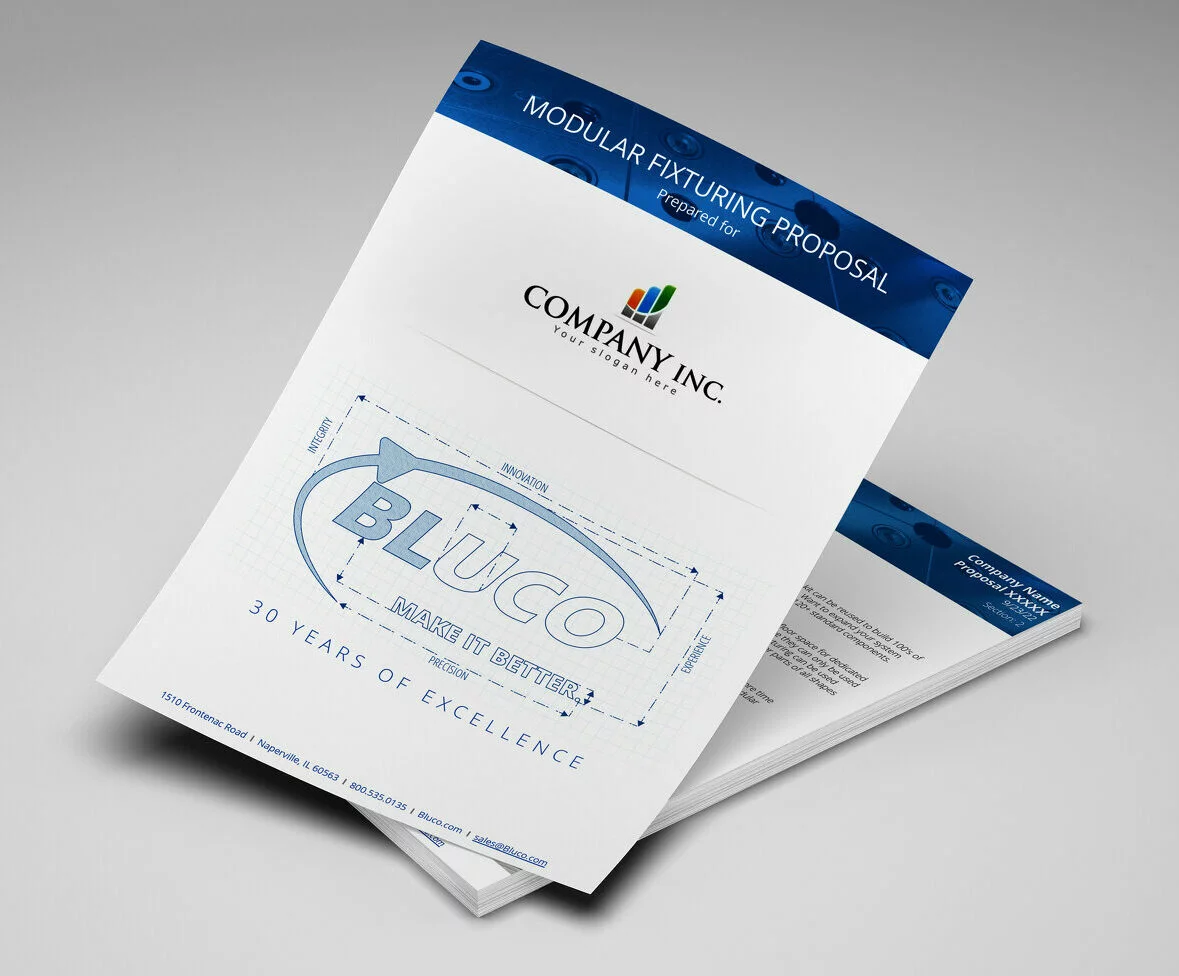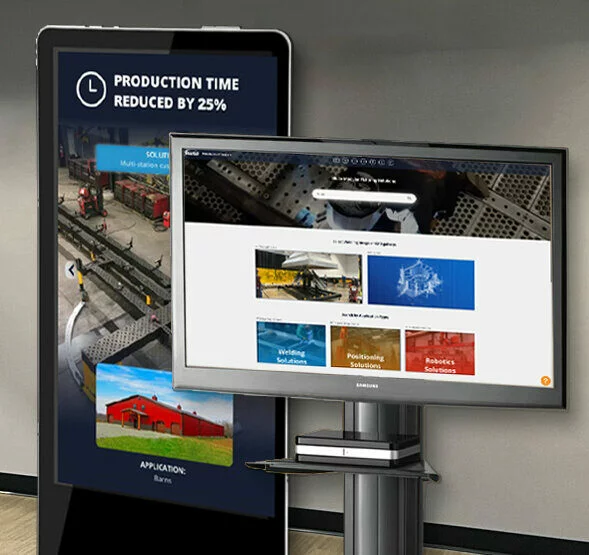Welding & Automation Challenges in 2025: What Bluco Experts Want You to Know
See how Bluco's experts are tackling the biggest manufacturing challenges with innovative solutions
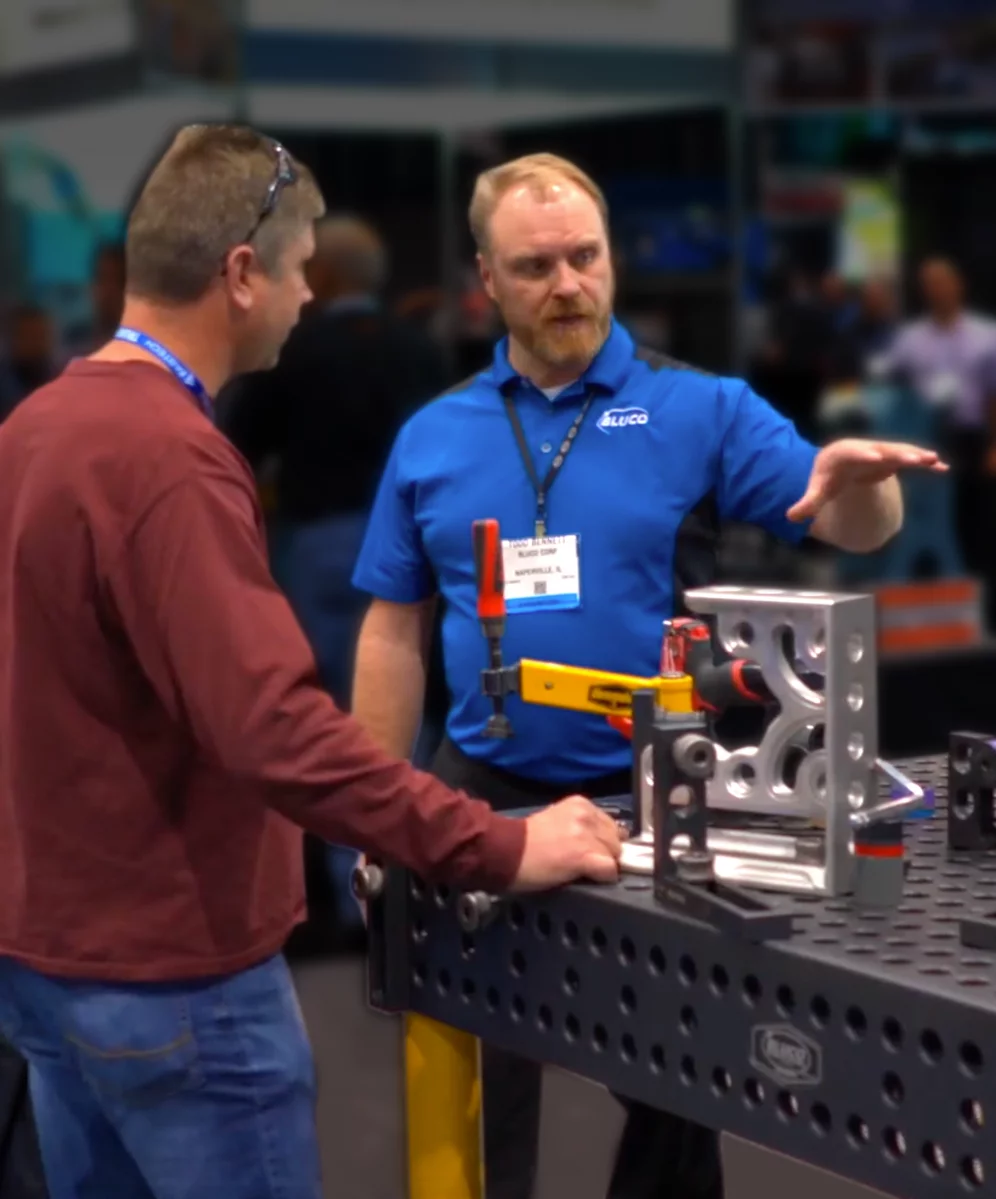
In the evolving landscape of manufacturing, staying ahead means constantly adapting to both old and new challenges.
As skilled problem-solvers, the team at Bluco has a unique perspective on these manufacturing challenges. After all, they get to dive deep into conversations with hundreds of manufacturers across a wide variety of industries every year. They hear first-hand what really keeps them up at night—and what solutions can make their days more productive.
Two members of our team, Director of Sales, Brian Dodsworth, and Senior Sales Engineer, Todd Bennett, sat down to share some of their latest insights on these challenges, and how workholding offers solutions. Plus, they reveal a big announcement on Bluco’s horizon!

Q: How have the challenges faced by manufacturers changed over the last 5-10 years?
BRIAN, on Top Manufacturing Challenges in 2025:
“The classic challenges remain surprisingly similar from year to year: inconsistent quality and inefficient processes. The big difference is that as the need to do more work with fewer people grows, those manufacturing challenges are amplified.
What I find interesting is how these challenges get repackaged every year with the latest tech trend. About ten years ago, general automation was being pitched as the solution. Now, it’s cobots. But when you dig deeper, you find that we’re still trying to solve the same core problems. It may look different because the focus is on the tech, but at the heart of it, manufacturers are still facing those same fundamental challenges.
Our goal is to educate the industry on the crucial role that workholding plays in overcoming these challenges. The reality is that whether you’re manually welding, cobot welding, or robot welding, focusing on the workholding step has the potential to unlock 2x, 3x, or even 5x improvements. That hasn’t changed over the years; when you get workholding right, you’re solving for those core manufacturing challenges and everything else falls into place. But too often, it’s still overlooked by manufacturers—there’s a gap in their process. Changing that has become our mission.”
To learn more about the engineering gap, check out our latest e-book, Bridge the Engineering Gap.
This photo of last year’s Fabtech booth setup includes our kiosks that show examples of some of the exponential gains that can be achieved by engineering the workholding step of a production process.
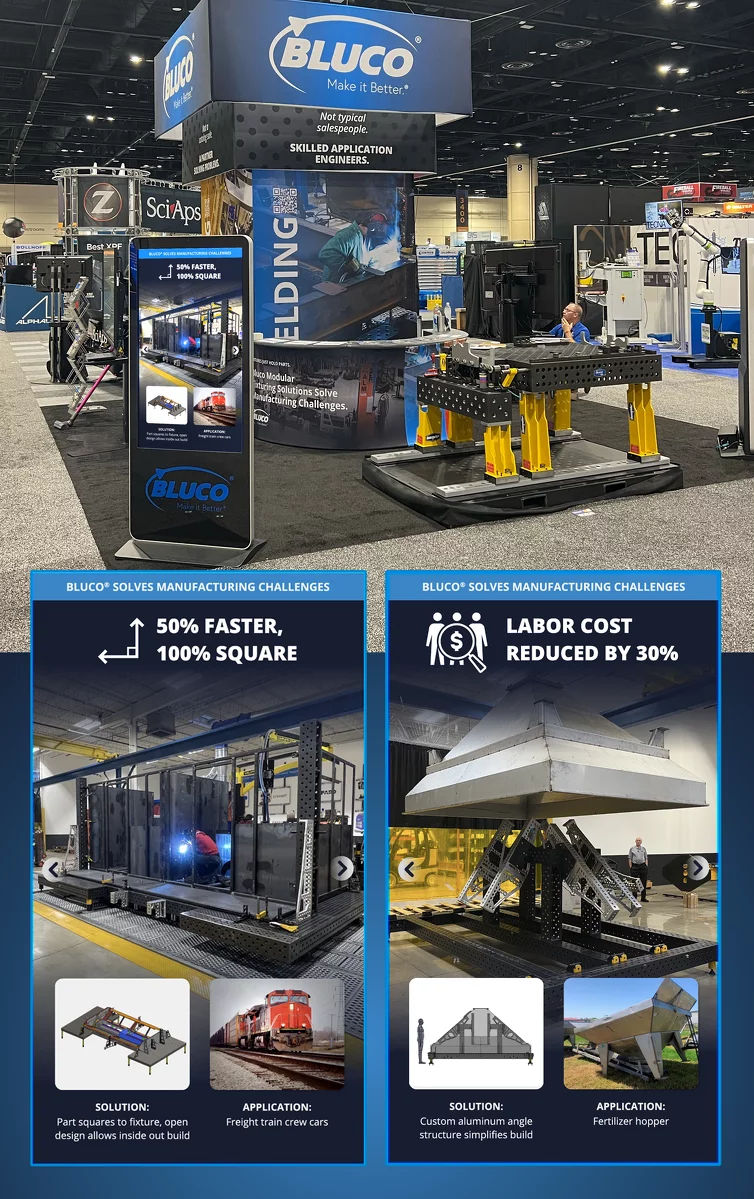
TODD, on the Challenge of Piecing Together Welding and Automation Solutions:
“I’d agree—the main manufacturing challenges haven’t changed. But what’s interesting is how manufacturers have changed the way they present those challenges when they’re looking for a solution.
Now there’s this misconception that you have to know exactly what you need before you approach a solution provider. I see it especially at trade shows. I was really struck last year at FABTECH by how the setup of a show like that influences how manufacturers present their challenges.
With each exhibitor in their own booth, it feels like every company is its own one-stop shop. So people tend to compartmentalize their questions. If you’re talking to someone who sells hammers, you only ask about nails, right? But that’s just not how it works. To come up with the entire solution, we need the entire story – all the challenges.
All too often, I’ll speak with a manufacturer in our FABTECH booth about a modular solution, and then run into them later at another booth, where they’re asking about positioning, or robotics. In reality — the modular solution, the robot, the positioners — they all go together. The key to creating a successful solution is piecing together all that information so we can understand the bigger picture and engineer the right solution.
And that’s where Bluco has a unique advantage. We’ve built relationships with companies that offer positioning, laser projection, robotics, and more. We all work together, so you don’t have to figure it all out. You don’t need to know how to put it all together or worry about what you’re not thinking of. That’s our job, so you can focus on running your business.”
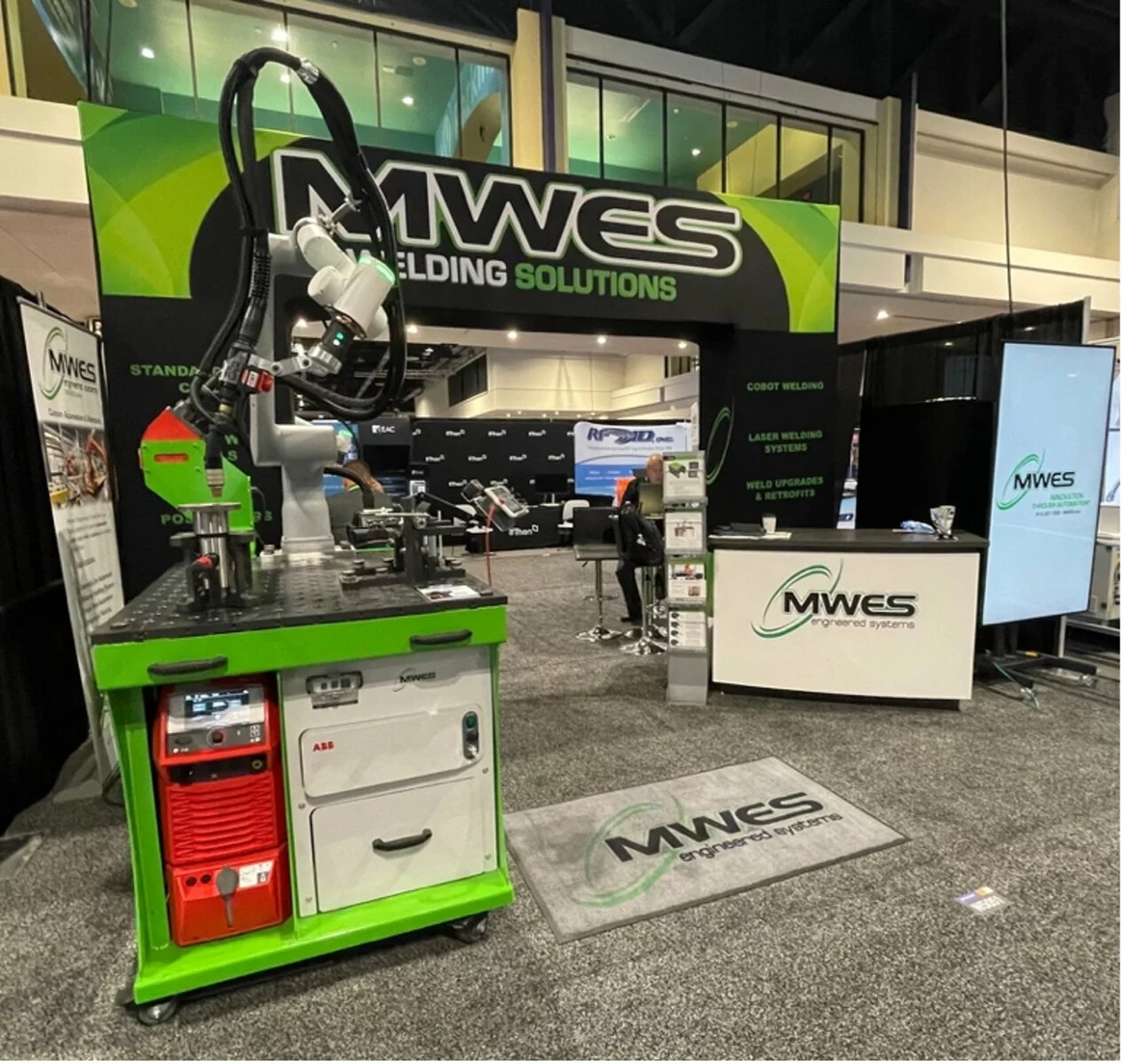
Q: Brian, you mentioned the current industry focus on cobots. What advice do you both have for manufactures interested in this type of automation?
BRIAN, on the Right Way to Approach Cobot Integration:
“My advice is different today than it would have been six months ago, because the landscape has already changed in that time.
I would still start off with the advice that cobots aren’t magic. Yes, they’re a powerful tool — they can multiply the amount of work that gets done while also improving consistency. Plus they’ve traditionally been easier to use than a full robotic system, so it’s very easy to think that just buying one is going to solve the problem.
The reality is that to get the most out of them, manufacturers have to be very intentional about what they’re trying to achieve before making that investment: how are we going to use it, what task is it going to do, what are our workflow needs?
It’s also important to consider size & speed. Most traditional workstations have a very small footprint and run at slower speeds. So if you’re welding something larger, or with a large number of welds, that traditional workstation may not be the answer.
The good news is that the industry has noted these limitations, and Bluco has something in the works for the second half of 2025 that is going to change the game. We’re about to reveal something that’s going to revolutionize the cobot space, and give manufacturers a new entry point into the world of automation.
So for anyone considering buying a workstation right now, I would say two things. First, don’t dive in before considering all your options. Second, give our sales engineers a call before you make a move. We’ll be announcing a formal launch soon, but our team is ready to talk to customers now about the new class of cobots we’ll be bringing to the North American market.”
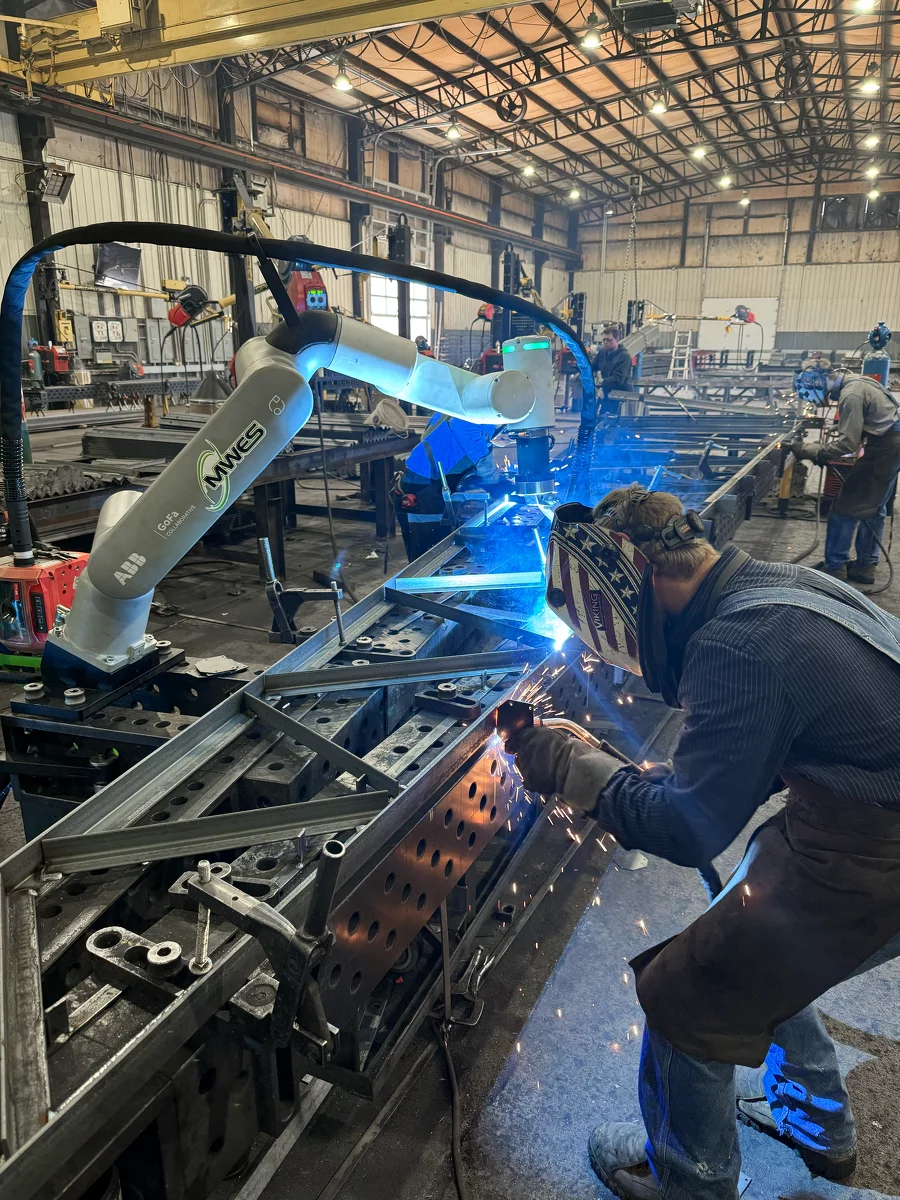
TODD, on Why a Cart and a Robot Arm Aren’t Enough:
“A lot of what manufacturers are seeing right now in ads and at trade shows are carts with robot arms on them –standard, non-custom carts. But what happens when they go to do an actual job with that kind of set up? It’s just an arm and a cart, without the fixturing or engineering support to help them do the work. So when they go to use it, they can’t. It just doesn’t have the functionality. In fact, when we get out in the field, very rarely do we see cobots like that in production use.
So my first piece of advice goes back to what I said earlier – don’t try to figure this out yourself. Maybe a cobot is right for you, maybe it’s not. Before you make the investment, let us help you figure that out. Especially given what we’re going to be introducing later this year. We can walk you through a whole new set of options that may change your decision.
Second, for manufacturers who’ve already bought a cart & the cobot, we can help you turn that into a profitable purchase. We can adapt that arm to our table and engineer the fixture and the tooling to make it work. And you can still use the cart, because the cobot has to have a welder, a controller and a wire spool to operate. Use the cart for that, and let’s move the arm over to a modular solution that will work for you.”
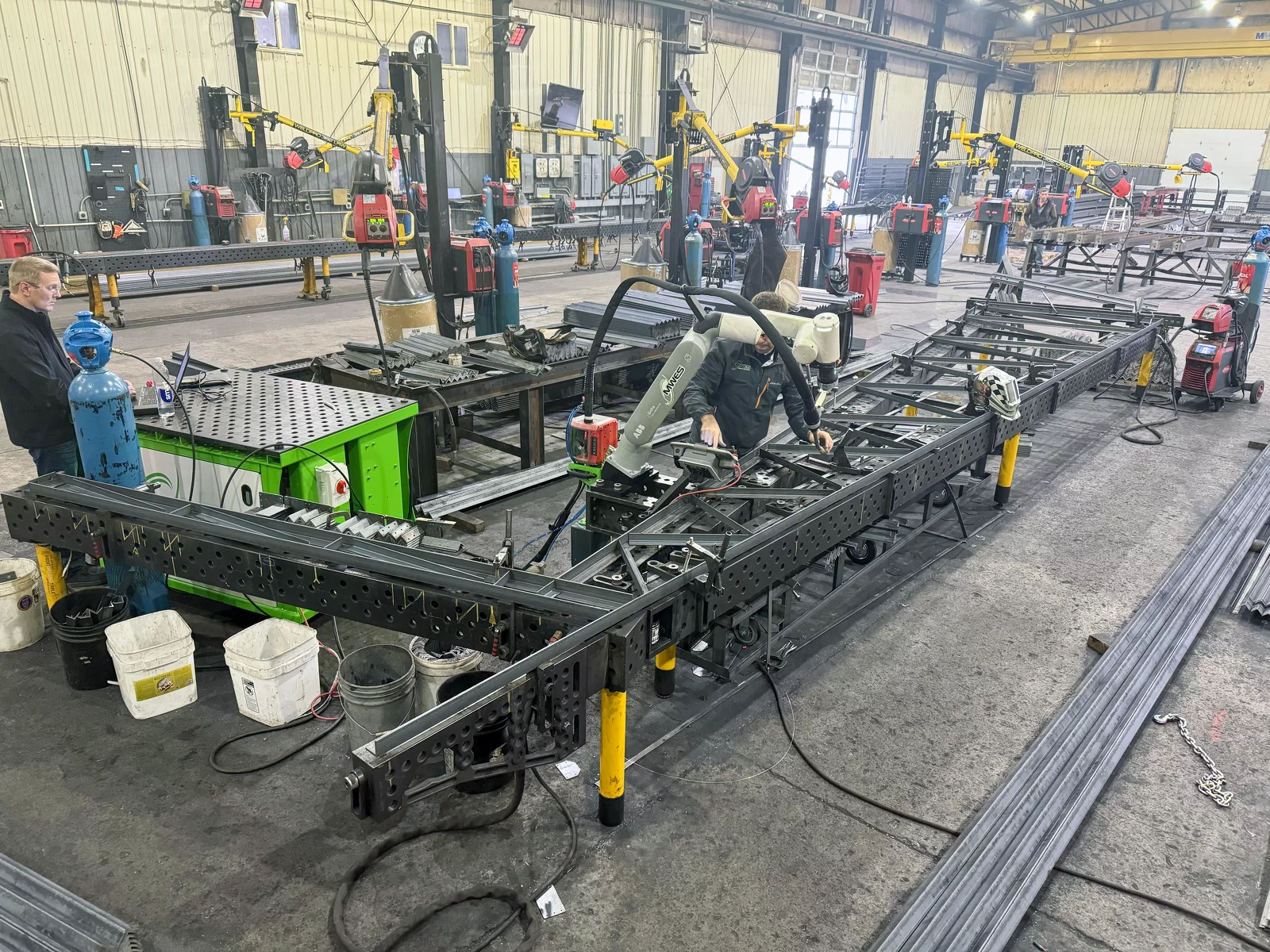
Q: So Bluco plans to launch its own entry into the cobot space soon. Can you share details?
BRIAN: A New Class of Cobot Is Coming — Here’s What We Can Tell You:
“Let’s just say it’s not going to look like the cobots your used to, and it’s not going to have the same limitations around size and speed for reasons that I’ll save until we get closer to launch. As that time approaches, you’ll hear more about Bluco Automation, which is the umbrella division that the cobot project falls under.
The business model we’ve developed will provide our customers with all the advantages of working with our experienced sales engineers, PLUS the advantages of cutting-edge automation. We’re very excited about it. Stay tuned for more news – we’ll share more as soon as we can.”

Final Thoughts
We’ll close with the revelation of a new product launch on the horizon. As our team reflects on our 35th year of Making it Better, it’s clear that even as technologies evolve, there are some constants that remain unchanged. Manufacturing challenges like quality control, efficiency, and labor shortages continue to drive innovation, and workholding continues to be a vital part of the solution.
We’re grateful for the customer discussions and relationships that help sharpen our focus on the needs of the industry, allowing us to actively shape market trends instead of just responding to them. As we look toward a new product launch that will do just that, we’ll continue to solve the classic challenges together, with innovative modular workholding solutions designed to help you decide confidently, move quickly and adapt seamlessly.

